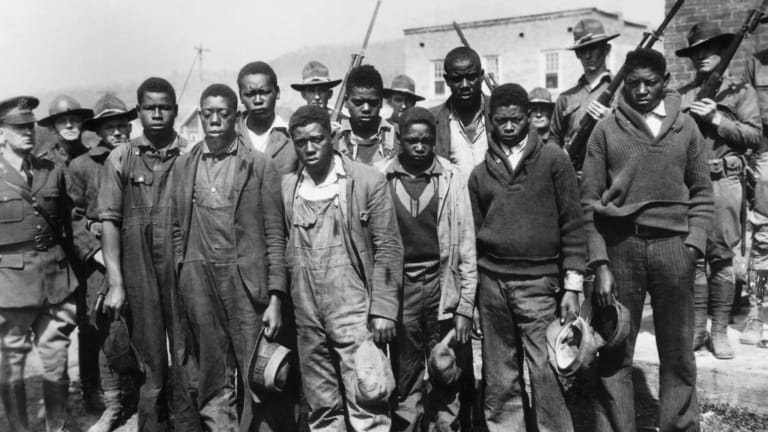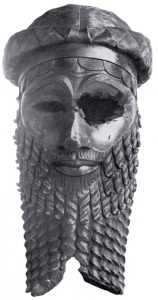April 7, 1931. Thousands of people gathered in the small town of Scottsboro, Alabama. A brass band entertained them with the song “There’ll be a Hot Time in the Old Town Tonight.”1 The verdict of nineteen-year-old Clarence Norris was read, convicting him of a crime he did not commit, and sentencing him to death. Clarence was the son of a former slave. At the young age of seven, he was put to work in the fields and went to school minimally. After his father died, he began working for wages, and he took a trip on the Southern Railroad to look for work. However, all it took was this train ride to change his whole life. And most importantly, all it took was this specific train ride to change history. Clarence Norris, an African-American teenager, was aboard that train, moving from town to town looking for a better life and a better opportunity. But what happened on that train ended all of those hopes. What began as a fight between a group of African-American teenagers and white teenagers would land Norris and the eight other “Scottsboro Boys” in jail with a minor charge. However, when two white females who were aboard the train told a different story, not only would the teenagers’ reputations be in danger, but their lives as well.
On the morning of March 25, 1931, nine African-American male teenagers were pulled off the train by the sheriff’s posse in response to a complaint about a fight on the train. Victoria Price, twenty-one, and Ruby Bates, eighteen, were also on the train hoboing, wandering aimlessly from one place to another looking for work. When questioned by the sheriff’s posse, the young ladies changed the lives of these nine young men when they accuse them of rape. By that evening, the local newspaper, Jackson County Sentinel, spread the word of this “revolting crime.”2
1931, ordinary general and department stores, houses, and schools were found on every corner. However, there was something far more sinister waiting around the corner. Groups of white individuals would gather together to form mobs to demand a lynching.3 This was what awaited the nine boys when they arrived at Scottsboro, only to be convicted of a crime they had not committed. By March 30, 1931, five days after being arrested for a minor charge, the Scottsboro Boys were all indicted by a grand jury. Then April 7 came. Distraught and alone, Clarence Norris found himself in a jail cell with a lynch mob forming outside the jail. The National Guard was brought in, in order to protect the Scottsboro Boys. Up to 10,000 spectators gathered as they brought Norris to trial, with armed soldiers on hand to keep the growing mob at bay. Bates had testified that she was beaten and bruised by the repeated rapes and that she lost consciousness, regaining consciousness only when she found herself on the way to the Scottsboro jail. However, multiple witnesses and officers reported seeing her fully conscious when she, and the boys, were taken off the train. R.R. Bridges, the physician who examined the two girls, testified that they showed evidence of recent sexual activity, but not recent enough to match the time of the alleged rapes, and they showed no evidence of bruising or violent treatment. The verdict was read and Clarence’s fate was in the hands of an all-white jury. The defense team provided to Clarence was Tennessee attorney Stephen R. Roddy, an alcoholic, who was not familiar with Alabama law, and Milo Moody, a 69-year-old lawyer who hadn’t practiced in years. 4 Despite the contrary evidence, in less than two hours, with the testimonies of Price and Bates, and the lack of proper representation, nineteen-year-old Clarence was sentenced to death. Surrounded by strangers, charged by men and a system built against his people, Clarence Norris began his forty-five-year long hardship, not only fighting for his rights, but also for his life.
“I was scared before, but it wasn’t nothing to how I felt now. I knew if a white woman accused a black man of rape, he was as good as dead… All I could think was that I was going to die for something I had not done.” – Clarence Norris 5

Anger and dismay began to sweep the nation and around the world over the racially motivated arrests and prosecution of the boys. In May of that year, hundreds of thousands of supporters gathered to protest the convictions and demanded the freedom of the young Scottsboro Boys.6 Astonished by the age of the defendants, the length of their trials, and sentences received, the National Association for the Advancement of Colored People (NAACP) as well as the International Labor Defense (ILD) reached out and provided support for the young men and their families. The organizations even raised money for appeals. However, the NAACP withdrew from the case due to the nature of the crime. 7

The following year, the Alabama Supreme Court kept all of the Scottsboro Boys convictions and death sentences except for the second youngest, Eugene Williams. In November, however, the U.S. Supreme Court ruled in Powell v. Alabama that Alabama had denied the defendants acceptable felony illustration or due manner guaranteed by the Fourteenth Amendment.8
During this time, Clarence spent the majority of his time on death row, haunted by the executions he could hear from his cell, and dreamt of his death. Norris was only nineteen years old and was forced to hear people being put to death. He lived knowing that the death penalty was the sentence handed to him, that eventually, his turn was going to come to be in that chair, for something that he never did. Norris was retried again in 1933, only to be sentenced to death yet again. However, this time his appeal was sent to the United States Supreme Court. In the trial, the court ruled that the absence of black jurors was a violation of the Fourteenth Amendment’s equal protection clause and called for a retrial.9 While awaiting a new trial, Norris felt alone and there was no one to talk to or anyone to listen to his story. Norris was tried and convicted a third time in 1937. Norris spent fifteen years in prison. Twice his head was shaved in preparation for his execution.
“I am alone, out to myself. No one to say a Kind word to Me just listens to the other people away from me.” – Clarence Norris
However, what the world didn’t expect was for the rape charges against Olen Montgomery, Willie Roberson, Eugene Williams, and Roy Wright to be dropped.10 As these Scottsboro Boys were released, Norris suspected that the State changed the story to get the four boys free, sacrificing his chance at freedom. The next year, his death sentence was commuted to life in prison. While working in a prison mill, Norris would lose a finger, be abused by guards, and spent long periods in solitary confinement. A once young man was now raised into the prison system, facing hardships for something he never did. Clarence Norris was losing hope.

In 1944 Clarence Norris stepped outside jail for the first time since 1931 when he was paroled.11 After prison, he was made to work in a sawmill by his parole officer. However, Norris had enough and it was time to leave, and he violated the conditions of his parole by leaving Alabama. At the time, Attorney Chalmers was still attempting to negotiate for the release of Powell and Patterson; his parole violations made this task monumentally more difficult. Eventually, Chalmers persuaded Norris to return to Alabama where he was taken into custody for another two years. Once paroled again, Norris violated his conditions by fleeing to New York, vowing to remain a fugitive, never to return.
Taking up his brother’s identity Norris found work on his own or with the help of friends like his defense lawyer, Samuel Leibowitz, and the NAACP. By the 1960s, he was living with a third wife and their children in Brooklyn, New York. Still, in violation of his parole, Norris always feared the effect of his past on his children. Norris contacted the NAACP to help him arrange a pardon. The NAACP launched a public campaign in the fall of 1976, which resulted in Governor George Wallace granting Norris a full pardon, officially freeing him at last, 45 years after his initial arrest.12 Norris died in 1989 at the age of 76, after publishing an autobiography, The Last of the Scottsboro Boys; he was the last surviving member of the original nine. It took eighty-two years for the State of Alabama to posthumously pardon the other Scottsboro Boys: Powell, Andy Wright, and Patterson in 2013.
Today, everyone who was a part of the trial is gone, but still, the story of the Scottsboro Boy lives on in sons, daughters, grandsons, and neighbors. The convictions of nine innocent teenagers have haunted the nation. It’s been 88 years since the Scottsboro Boys were first convicted of rape and sentenced to death, and most of the lives of the Scottsboro Boys have been lost in the light of this American tragedy. However, the effects of their cases have left an everlasting effect on today’s world and have helped provide the strength to bring justice in a time when people have become divided once more.13
“The lesson to black people, to my children, to everybody, is that you should always fight for your rights, even if it cost you your life. Stand up for your rights, even if it kills you. That’s all that life consists of.” – Clarence Norris
- Encyclopedia of Race and Racism, 2013, s.v. “Scottsboro Boys” by Margaret Burnham. ↵
- James Goodman, Stories of Scottsboro (New York: Pantheon Books, 1994), 11-12, Google Scholar. ↵
- James A. Miller, Susan D. Pennybacker, and Eve Rosenhaft, “Mother Ada Wright and the International Campaign to Free the Scottsboro Boys, 1931-1934,” The American Historical Review 106, no. 2 (2001): 390-391. ↵
- Hugh T. Murray, “The NAACP versus the Communist Party: The Scottsboro Rape Cases, 1931-1932,” Phylon (1960-), no. 3 (1967): 276-277. ↵
- James E. Goodman, Stories of Scottsboro (New York: Vintage Books, 1995), 5. ↵
- Hugh T. Murray, “The NAACP versus the Communist Party: The Scottsboro Rape Cases, 1931-1932,” Phylon (1960-), no. 3 (1967): 278. ↵
- James A. Miller, Susan D. Pennybacker, and Eve Rosenhaft, “Mother Ada Wright and the International Campaign to Free the Scottsboro Boys, 1931-1934,” The American Historical Review 106, no. 2 (2001): 390-391. ↵
- Encyclopedia of Race and Racism, 2013, s.v. “Scottsboro Boys,” by Margaret Burnham. ↵
- Norris v. Alabama, 294 U.S. 587 (1935). ↵
- Encyclopedia of the Supreme Court of the United States, 2008, s.v. “Scottsboro Boys” by William Bush. ↵
- James A. Miller, Susan D. Pennybacker, and Eve Rosenhaft, “Mother Ada Wright and the International Campaign to Free the Scottsboro Boys, 1931-1934,” The American Historical Review 106, no. 2 (2001): 392. ↵
- Encyclopedia of the Supreme Court of the United States, 2008, s.v. “Scottsboro Boys” by William Bush. ↵
- Encyclopedia of the Supreme Court of the United States, 2008, s.v. “Scottsboro Boys” by William Bush. ↵



75 comments
Veronica Lopez
It brings me great sadness how extreme racism was during the 1940s. It pains me how easily it was to accuse an African-American of a crime. Such as rape. It really isn’t fair how we still continue to see this type of racism during the twenty-first century. By the way, I loved that you used the actual flyers for the ‘Scottsboro Boys’ case. I always find it interesting seeing official documents on this particular topic.
Guadalupe Altamira
It always saddens me that during this time African-American people had such a harsh life just because of the color of their skin. Many people had to face harsher consequences for things they didn’t even commit and were jailed for the majority of their life. Clarence Norris was an example along with the other boys of what it was like to be an African-American in the 1930s when life was bad for everyone but those of color were faced accusations and given death sentences.
Gabriel Gonzalez
What I enjoyed most about the article is how detailed it was. From the timeline and pictures to the quotes given by historical figures relating to the incident. What I also enjoyed was how well the mood of the situation was written into the words of the article. While reading about the prosecution we could see how the racist ideologies of the jury would affect their decision with the given evidence.
Cecilia Schneider
I found the last paragraph and statement from Clarence Norris wonderfully written and very powerful. Such a small altercation was taken into extreme measures so quickly. I am surprised and glad to see that people such as doctors checking the girls and others who witnessed that the women were lying said something about this rather than immediately take the side of the white women and white mob. However, they did not do much or at least enough as these boys were trialed and sentenced to death. All for claims that were not true, and were able to be disproved.
Gabriella Parra
Your intro to this article was great. It really got me interested in finding out what happened at the end. It is saddening that Norris had to endure these horrors for a change to be made and so far after the inciting events. Often it feels like it requires martyrdom to spark a change. This is such an important story to tell so that we can learn to look for injustices happening right now in order to prevent minority groups from suffering any longer.
Dylan Miller
This article was a fantastic and interesting read! The story of the Scottsboro boys is extremely unfortunate, and the treatment that was given to them was completely unnecessary, and it’s a shame that so many people demanded for their deaths. However, Norris’ story of getting out of prison, and helping the NAACP in telling the story of the nine boys is a shining light at the end of the tunnel, brings the story to a somewhat happy ending, as their story was told to many and shed light on racism and bias in court. The writing style in this article really kept me hooked, in addition to the pictures of the newspapers tat showed what people saw, really adds a depth of authenticity!
Velma Castellanos
Reading the article comes to show how many people were wrongfully committed for acts they did not do. The deep south was not the best place to live for people of color. I had never head of these boys until now but I hate how these two women lied about being raped to turn these boys lives for a brutal turn. Overall, I really enjoyed reading your article and it also showed how the law needed to change for people of color. These men did not deserve to go through the pain they went through.
Elizabeth Saxon
I really liked this article because it elucidated what Clarence and other African Americansamericans went through during this time. I hate how they did not have the right to a fair trial because the jury was all white. The way racism was back in the day, made it very unfair toward clarence and the boys because they dint even have a chance of being able to get out of the conviction.
Mckenzie Gritton
This was really well written. I hadn’t really heard about this story before, but I’m glad I do now. It’s truly disgusting how nasty people can be. Those women lying about being raped turned his life upside down. The cruelty and suffering that he experienced because of these false claims just shows how our system needs to change. Even today, we still have black men and women being falsely imprisioned and targeted. We need to do better.
Dominique Rodriguez
this article is very interesting. I’ve never heard about these boys who got accused for raped. its so sad how he was sentenced to death by lie that these women told the police. it so sad how there was like a crowd of people just waiting for them to kill the. back then its crazy how lynching was even allowed killing people in front of a whole crowd. also the fact the at lady lied saying that they had beat her up and gave her bruises and then raped her. its so unbelievable that she can do this. this article explained everything really well.